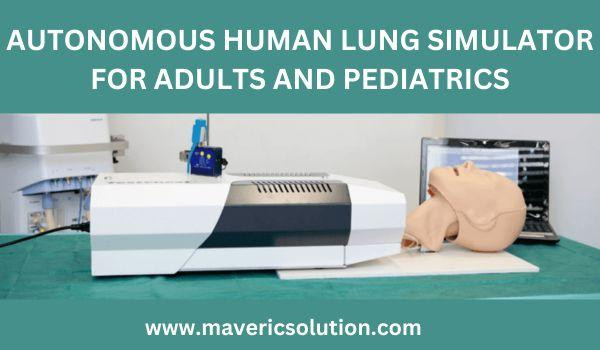Autonomous Human Lung Simulators ~ Revolutionizing Respiratory Research
Autonomous human lung simulators are cutting-edge technological devices designed to replicate the functions and responses of the human respiratory system. These simulators utilize advanced engineering principles, computational models, and artificial intelligence algorithms to mimic the complex behavior of human lungs accurately. By providing a realistic platform for studying respiratory physiology and pathology, autonomous lung simulators have revolutionized research in areas such as pulmonary medicine, drug development, and environmental health.
Key Components and Features
Autonomous human lung simulators consist of several key components that work together to simulate the intricate processes of breathing, gas exchange, and lung mechanics. These components typically include:
Airway Model: The airway model forms the foundation of the simulator and replicates the branching structure of the human respiratory tract. It includes anatomically accurate representations of the trachea, bronchi, bronchioles, and alveoli.
Mechanical Ventilation System: A mechanical ventilation system is integrated into the simulator to regulate airflow patterns, tidal volumes, and breathing frequencies. This system can simulate various breathing conditions, from normal respiration to pathological states like asthma or chronic obstructive pulmonary disease (COPD).
Gas Exchange Module: The gas exchange module mimics the process of oxygen uptake and carbon dioxide release within the alveoli. It calculates parameters such as oxygen saturation levels and carbon dioxide partial pressures to assess respiratory function.
Sensors and Data Acquisition Units: Sensors embedded within the simulator measure variables such as air pressure, flow rates, oxygen levels, and pH. Data acquisition units collect real-time data for analysis and feedback control.
Control Software: Advanced control software governs the operation of the simulator by adjusting ventilation parameters, monitoring physiological responses, and implementing experimental protocols. Machine learning algorithms may be employed to optimize simulation accuracy over time.
Applications in Research and Development
Autonomous human lung simulators offer a wide range of applications in both academic research and industrial settings:
Drug Testing: Pharmaceutical companies use lung simulators to evaluate the efficacy and safety of new drugs targeting respiratory conditions like asthma, cystic fibrosis, or pulmonary fibrosis. These simulations provide valuable insights into drug delivery mechanisms and potential side effects.
Toxicology Studies: Researchers utilize lung simulators to assess the impact of environmental pollutants, cigarette smoke, or occupational hazards on respiratory health. Scientists can study cellular responses and inflammatory pathways by exposing simulated lungs to toxic substances.
Personalized Medicine: With advancements in precision medicine, autonomous lung simulators enable researchers to tailor treatment strategies based on individual patient characteristics. By analyzing how different individuals respond to therapies in a simulated environment, personalized treatment plans can be optimized.
Future Directions and Challenges
As technology continues to evolve, baby lung simulators hold immense potential for further innovation:
Multi-Organ Integration: Integrating lung simulators with other organ models could facilitate comprehensive studies on systemic diseases affecting multiple organs simultaneously.
Virtual Clinical Trials: Virtual clinical trials conducted using autonomous lung simulators may streamline drug development processes by predicting patient responses more accurately before actual trials begin.
Artificial Intelligence Enhancements: Leveraging AI algorithms for real-time adaptive control could enhance the fidelity of simulations and enable dynamic adjustments based on experimental outcomes.
Autonomous human lung simulators represent a groundbreaking tool for advancing our understanding of respiratory physiology and pathology. By combining sophisticated engineering with biological insights, these simulators pave the way for innovative research avenues in pulmonary medicine and beyond.
For more info: https://www.mavericsolution.com/



Comments
Post a Comment